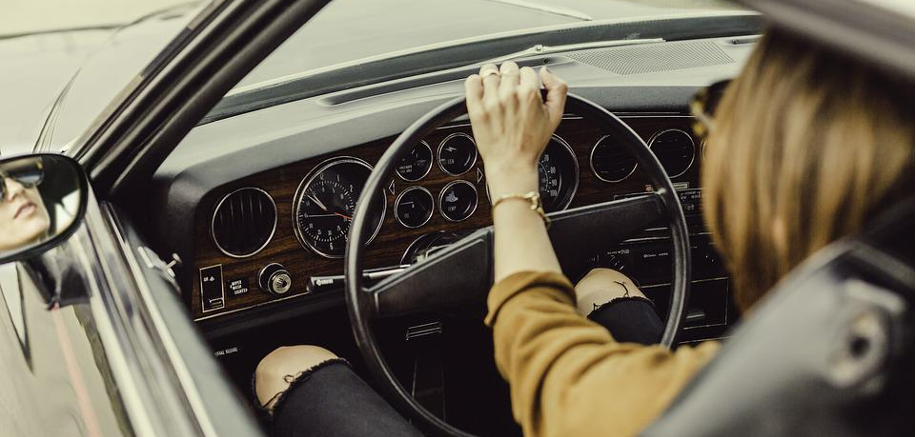The open road. A breath of fresh air. Some speed.
There are few things quite as emblematic of personal freedom as driving a vehicle. Obtaining a driver’s license is a ticket into adult decision-making and the freedom to go wherever. For many adults, vehicles are status symbols that speak towards not only our financial status but act as a window into our personalities as well.
However, driving comes with its own sets of inequities. In fact, it is estimated that less than 7 percent of driver’s license holders in India are women. Indeed, driving can come with a bundle of stereotypes and prejudices, especially for women. As such, driving is a feminist issue.
Even in the 21st century, women still face stereotypes behind the wheel. Other barriers are still very much in place for women including safety concerns, being taken seriously at mechanic shops, and being taken advantage of at car dealerships. In some situations, women are still far more at risk than male drivers.
Fortunately, today more than ever, women are claiming space in the automotive world and making it their own.
Addressing Gender Stereotypes
We’ve all heard at least some of the sexist female driver jokes and quips out there. Sadly, plenty of vehicle marketing today still plays upon gender stereotypes. Men are typically made to be more powerful and confident when they are driving vehicles in commercials, while women are still portrayed as comically bad drivers. In these commercials, men are often on the sidelines joking about female driving ability.
Although these stereotypes paint a picture of terrible female drivers all over the road, it couldn’t be further from reality. Globally, driving statistics indicate that women are generally safer drivers than men. But women may be significantly less safe on the road than their male counterparts.
Promoting Women’s Safety on the Road
In many instances, stereotypes are not the only thing that women face while on the road. Female drivers are also far more likely to be at risk of violent incidents on the road that are not directly related to vehicle accidents. For example, women are still more likely to fall prey to hijacking, intimidation, and sexual assault while driving alone. In fact, a survey of 1,500 women in the UK by Motor Fuel Group demonstrated that 4 out of 10 women are afraid to drive at night.
There is a great deal of advice out there to help women stay safer while driving alone. Strategies to avoid potentially dangerous situations include things like:
- Learning how to do basic car maintenance;
- Conducting maintenance checks before going on long trips;
- Avoiding running low on fuel;
- Ensuring they charge their cell phones fully before driving;
- Avoiding traveling unfamiliar routes in bad weather or at night;
- Keeping valuables out of sight;
- Locking doors and windows;
- Parking in central, well-lit areas.
Addressing women’s personal safety while driving alone is a challenging issue that is based much more upon the greater society and local culture of the area. Personal awareness and preparation are significant components of staying safe. That being said, your safety preparations shouldn’t make you overly anxious to properly enjoy the benefits of driving. You can simultaneously take steps to identify and treat symptoms of travel-related anxiety, such as using grounding techniques, planning the route ahead of time, or seeking professional help if their mental health concerns become too severe.
Taking Charge of Vehicle Situations
Some of the most frustrating issues that many women still deal with while driving are related to vehicle maintenance and purchase. Thousands of women often bring a male companion to avoid being taken advantage off. They want fair treatment.
Arguably even worse than purchasing a new car is having to get maintenance done on the old one. Many women hate going to the mechanic shop even more than going to the dentist. Once again, this is a male-dominated destination where women are often made to feel taken advantage of. Some studies even indicate that they’re right; many mechanics are more likely to offer unneeded services or jack up the price for female customers.
Fortunately, many women are addressing this by no longer taking a backseat in vehicle maintenance. A greater number are taking the time to educate themselves about basic car maintenance and coming to the mechanic or dealership with greater knowledge of the issues, which reduces the likelihood of being played the fool. Some strategies that women can also use to avoid being taken advantage of by a mechanic can include:
- Asking if billing will be by the hour or by the job;
- Having a clear explanation of the warranty policy;
- Clarifying what types of parts will be used – including new, after-market, or original equipment manufacturer (OEM) components;
- Obtaining an itemized list of the parts that one needs for the repair.
To further fight stereotypes while breaking the glass ceiling, more women are opening mechanic shops, which have become important community spaces for female customers and staff alike.
Conclusion
Driving a vehicle is a classic symbol of personal freedom, but some groups are less likely to feel this. Women, in particular, face substantial barriers to equality in driving. It includes negative stereotypes, greater safety risks in driving alone, and a higher likelihood of facing scams by those in the auto industry. Today, many women are making strides to break down these barriers and claim space in the automotive world.
About The Author

Ainsley Lawrence is a freelance writer from the Pacific Northwest. She enjoys writing about the ways technology, education, and wellness intersect and impact our everyday lives. She is frequently lost in a good book.
Photo Credit: Pixaby
